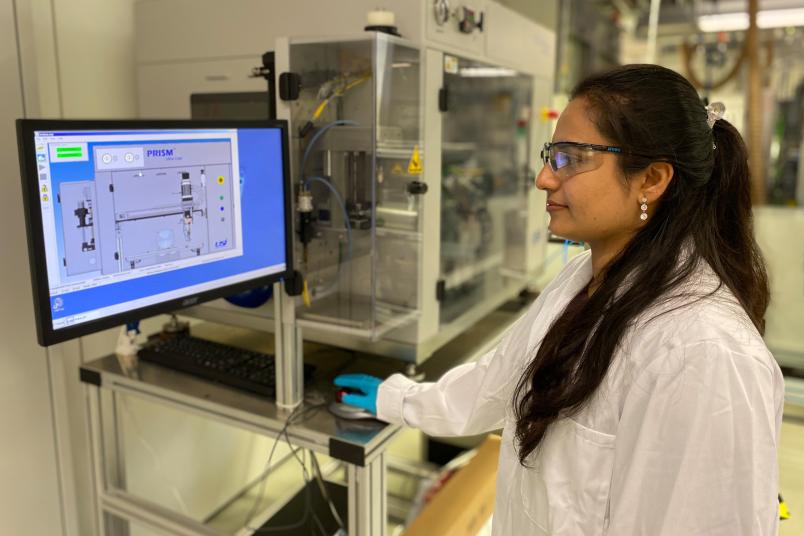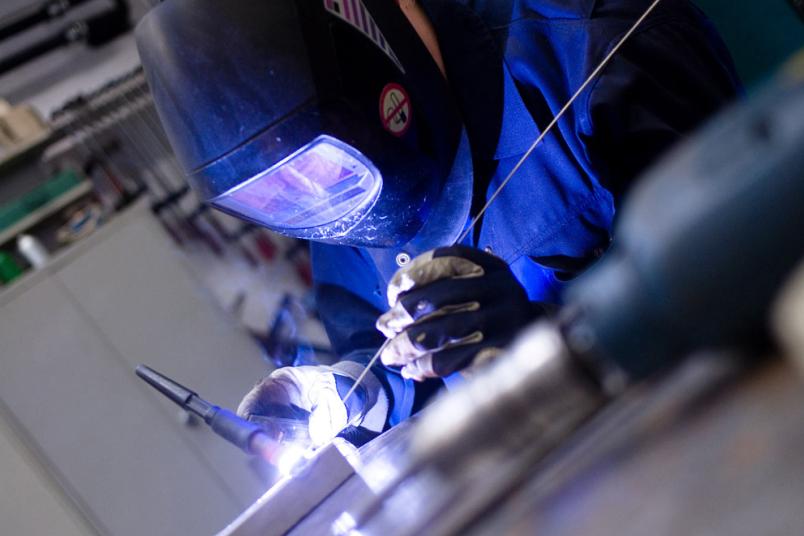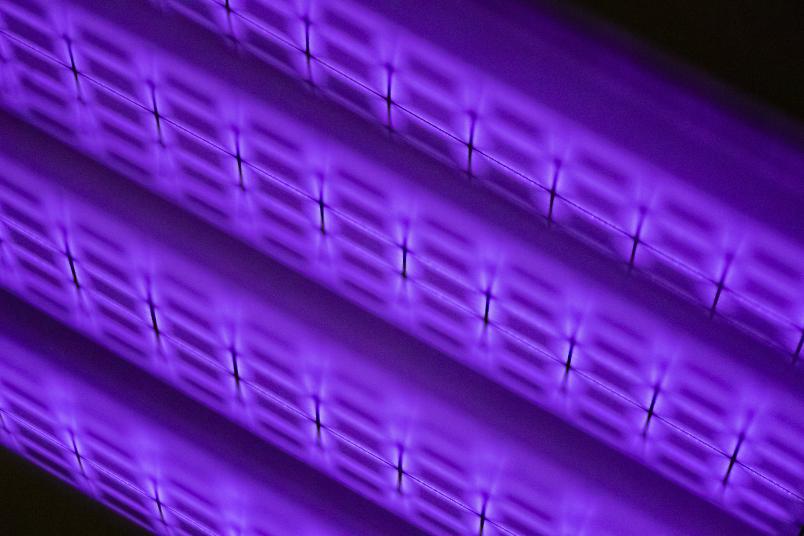
Materials Science Making electrodes robust for H2 production
“We live in a world where energy demand is rising day by day”, says Vineetha Vinayakumar. That’s why the materials scientist focuses on developing efficient and environment-friendly ways to produce hydrogen.
You are an expert on Materials Engineering. Can you explain your current research focus?
Currently, I focus on Green Hydrogen whose climate impact is negligible. One production method is the electrochemical splitting of water molecules into hydrogen and oxygen. Here, my research focuses mainly on the anode developments for alkaline electrolysis. As part of a hydrogen flagship project (H2Giga), I investigate electrodes composed of metal oxides at different stages of processing, employing a coherent workflow to optimize each step individually, thereby making these electrodes more efficient, stable and scalable. I apply my knowledge and experience in in-depth material characterization and processing, using a set of complementary advanced techniques to investigate these electrode materials in their powder, suspension, and thin film form. I then use the information to further optimize them.

Thin films provide a cost-effective and highly efficient solution for a wide range of applications.
One way to apply nanoparticles is by producing thin films. What is the advantage of nanofilms and what have you researched in this area?
Thin films, renowned for their minimal material usage and remarkable properties tailored for specific purposes, provide a cost-effective and highly efficient solution for a wide range of applications. So far, I have done research on semiconductor, metal, and metal oxide thin films obtained through different techniques such as spray coating, combinatorial sputtering, chemical bath deposition, and thermal evaporation for applications in solar cells, photodetectors, and electrocatalysis. Following the fabrication of each thin film, conducting advanced characterization becomes paramount. This step enables us to establish a direct correlation between the thin film's properties and its performance in the intended application. Consequently, we gain the ability to fine-tune these properties to optimize thin film performance.
What is the most stunning research finding you have come across so far?
While developing an emerging material for the solar cell application, Copper antimony sulfide (CuSbS2), I optimized the synthesis conditions to obtain CuSbS2 solar cell absorber layers which obtained the highest-ever open-circuit voltage reported at that time.

I've always embraced the idea that continuous learning is essential.
“Once you stop learning, you start dying” is a quote attributed to Albert Einstein. How does this relate to your life as a researcher?
Throughout my journey from a student to my current role as a team leader and postdoc, I've always embraced the idea that continuous learning is essential. As a researcher, my life revolves around a constant process of acquiring new knowledge and staying updated with the latest techniques and developments in the field. It's this ongoing pursuit of knowledge that keeps me excited in my research.

